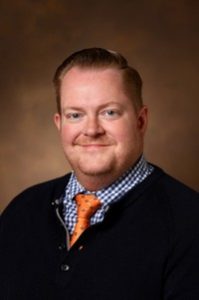VISE Fall Seminar – Seth Smith, PhD
to be led by
Seth Smith, PhD,
Associate Professor of Radiology and Radiological Sciences,
Biomedical Engineering, and Ophthalmology,
Director of Human Imaging Core, VUIIS,
Vanderbilt University Medical Center

Date: Thursday, September 13, 2018
Location: Stevenson Center 5326
Time: 12:10 p.m. start, 12:00 p.m. lunch
Title: Spinal Cord MRI: From Infancy to Outcomes
Abstract: Spinal cord MRI, especially advanced spinal cord MRI methods, have lagged behind similar MRI developments in the brain due to a few, well-defined hurdles. Primarily, the spinal cord is a difficult neurological structure to image due to its size, motion, and location within the body. Added to these difficulties, it a relative lack of understanding of the role the spinal cord plays in disease manifestation and evolution, how it is damaged (and how it is repaired or recovers) in trauma, and worse, little is known about its normal maturation. The goal of this presentation is to highlight some of the recent developments in spinal cord MRI; how we are striving to develop studies similar to the brain, and ultimately to understand more about the relationship between the spinal cord and outcome measures, disease impact, and intervention. We will cover a range of imaging techniques, along with defining the challenges to spinal cord MRI, and close with applications derived from infancy through late adulthood.
Short Bio: Seth Smith received a BS in Physics and a BS in Mathematics from Virginia Tech with a concentration in classical languages. He received his PhD from Johns Hopkins University in Molecular Biophysics under the supervision of Dr. Peter van Zijl, a leader in advanced MRI developments. He currently is an Associate Professor of Radiology, Biomedical Engineering, and Ophthalmology at Vanderbilt University and is the Director of the Center for Human Imaging at the Vanderbilt University Institute of Imaging Science. His research focuses in development and application of advanced MRI methods to underrepresented neurological structures such as the spinal cord and optic nerve, with a focus on utilizing these development in patient populations.

